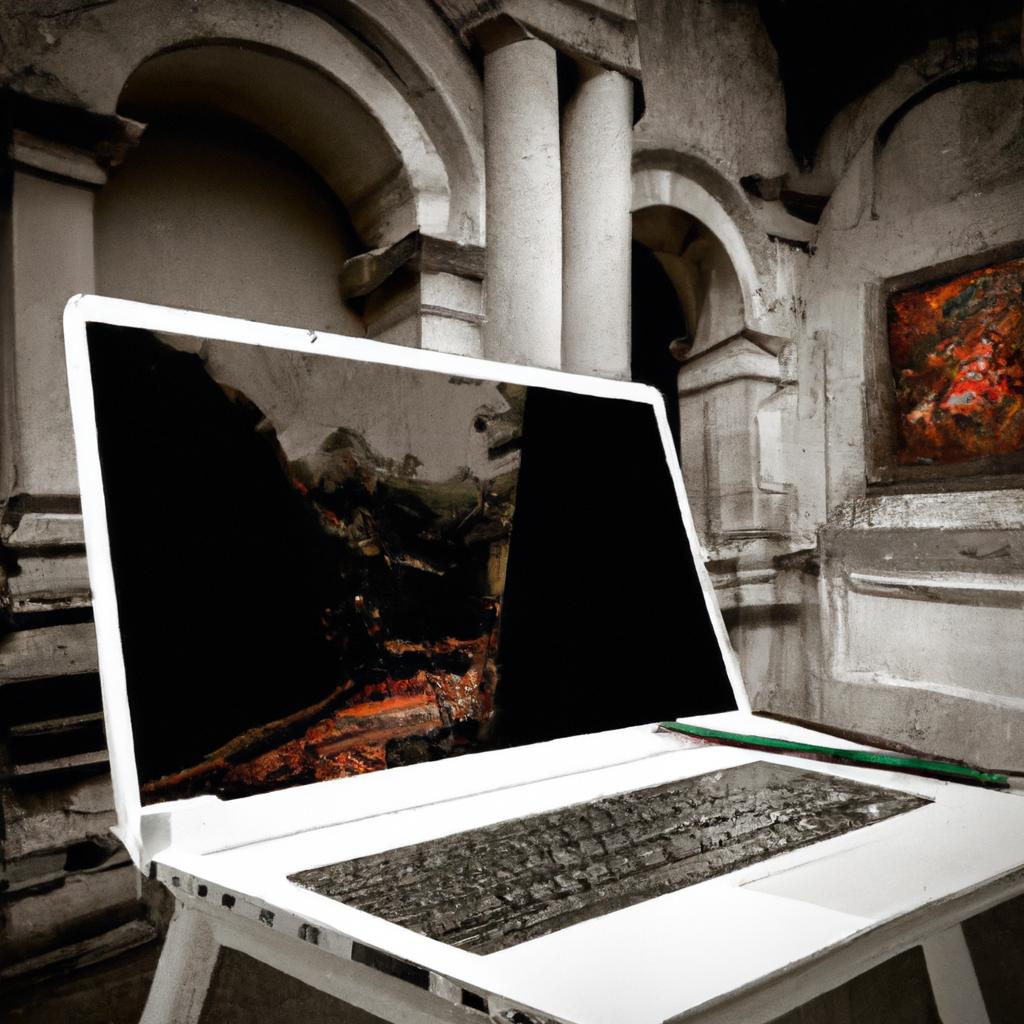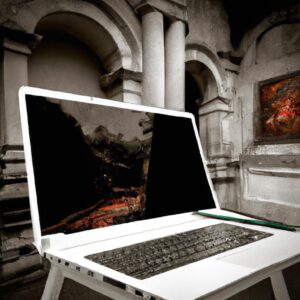Introduction: The Impact of Technology on the Evolution of Art throughout History
The history of art is one full of innovation and creativity, with each era having its own unique style and techniques. Perhaps one of the most influential factors in the evolution of art throughout history has been the technological advances of the time. Emerging technologies have paved the way for greater expression, new media, and increased levels of detail, all of which have led to a greater appreciation of art and its role in culture.
From the earliest prehistoric art to the sophisticated digital productions of today, technology has had a tremendous impact on the evolution of art. Let’s explore the fascinating journey art has taken throughout history and uncover how technology has shaped it.
Prehistoric Era: How Technology Influenced Art
Throughout history, technology has been a driving force in the evolution of art. In prehistoric times, technology was used to create objects that were both practical and aesthetic—the most notable of these being cave paintings. These drawings were created with the help of tools such as flint blades and stones, which were used to carve outlines into the soft walls of the caves. The colors were made from ground up minerals and plant materials, which were mixed with water or animal fats to create a paint.
Along with cave paintings, prehistoric man also used technology to make carvings and sculptures. The tools used to create these works of art were simple yet effective—such as flint, bone, and stone—but this didn’t stop them from producing some of the most beautiful works of art known to man. One example is the “Venus” figurines, which are small sculptures of women, often made from stone or ivory, and were thought to be fertility symbols.
Additionally, ancient civilizations also used their technological inventions to create pottery and jewelry. Pottery was an important part of prehistoric cultures, as it was used to store water and food. The designs on these items ranged from intricate seals and symbols to more simplistic geometric shapes. Jewelry was also popular during this era, and was often made out of beads, shells, and bones. While jewelry was considered a status symbol of sorts, it also likely served another purpose — to ward off evil spirits.
By taking advantage of the tools available to them, early humans were able to create artwork on a larger scale than ever before. This allowed them to express their ideas and beliefs through art, which played an important role in their culture and beliefs. As technology has evolved, so has art, and it will continue to do so for many more years to come.
Ancient World: The Evolution of Art Through Technology
The ancient world witnessed many technological advances, leading to a revolution in the production and expression of art. Ancient Egypt saw the development of glass paste, which allowed for new and unique jewel designs. In Greece, advances in metallurgy and carving techniques resulted in intricate sculptures and designs. Meanwhile, Rome’s advancements in engineering allowed for complex arches and domes.
These technological advances enabled artists to create more lifelike and elaborate works of art with greater detail. Ancient Egyptians used enamel to create brilliant jewelry pieces, while Greeks used iron to create durable and static sculptures. Romans were able to advance their construction techniques as they built monuments such as the Colosseum, which was made out of concrete.
In addition to these new materials and construction techniques, the ancient world also saw the emergence of various painting styles. Paintings were first found in Neolithic caves before becoming more popular during the ancient period. Ancient Greek painters created murals that depicted scenes from mythology, while Roman frescoes were used to show scenes from everyday life.
In conclusion, the ancient world saw various technological advances that enabled artists to produce new and different works of art. These advancements in materials and techniques allowed for the creation of realistic sculptures and paintings with intricate detail. Furthermore, ancient painters were able to bring to life mythological and everyday scenes through their works.
The Impact of Technology in the Middle Ages
During the Middle Ages, technology allowed for the production of manuscript books to reach new heights. To craft these books, scribes used materials like parchment, vellum, and paper. The availability of these materials, as well as technological advances in ink and quills, made it possible for a wide range of material to be produced.
In addition, printing presses revolutionized the way books were created during this era. Instead of having to be written out by hand, books could now be printed off of a machine. This not only sped up the production process, but it also allowed for mass distribution of the material.
The development of technology also allowed for complext illustrations to be included in manuscripts. Woodblock printing was an important innovation that allowed for illustrations to be reproduced quickly and accurately. This gave rise to illuminated manuscripts, which featured elaborate illustrations alongside hand-written text.
Renaissance Art: Exploring Technological Developments
The Renaissance period, which began in the 14th century and lasted until the 17th century, saw major advances in technology, including in the area of art. One of the most influential inventions was the printing press, introduced by Johannes Gutenberg in the mid-15th century. This revolutionary new technology made it possible to mass-produce books, pamphlets, and other materials quickly and cheaply.
The printing press allowed an influx of new ideas to spread rapidly throughout Europe. This helped to create a more educated and engaged public who were hungry for new information and ways of thinking. Therefore, the works of various Renaissance artists and authors, such as Michelangelo, Leonardo da Vinci, and William Shakespeare, became popular among the public.
In addition to the printing press, other inventions of the Renaissance period such as the moveable type, paper, and oil paints, enabled new forms of artistic expression to emerge. The use of oil paint created much more vivid colors, allowing artists like Jan van Eyck to create photorealistic paintings. Furthermore, innovations in perspective and anatomy allowed for a greater level of realism in artworks.
Ultimately, the technological developments of the Renaissance period had a profound impact on the evolution of art. Through these advancements, artists were able to craft works that were more unique and personal. Additionally, they were able to reach a wider audience than ever before, allowing their works to influence and inspire others.
Modern Art
The dawn of the 20th century saw a flurry of new technology that impacted the art of this era. The advent of photography, portable film cameras, and other technological advances provided artists with a range of new tools for expressing their creativity. This was especially true for the modern art movements of Cubism, Abstract Expressionism, and Pop Art.
Cubism, pioneered by artists such as Pablo Picasso and Georges Braque, revolutionized the way people view perspective and dimension by using techniques such as collage and assemblage. By cutting and altering photographs and other materials, these artists created a new way of representing a scene. New photographic processes also allowed artists to explore the nuances of light and color in a way that had never been seen before.
Abstract Expressionism also benefited from advances in technology, particularly in regards to photography and film. These tools enabled the artists of this movement to document their work in an efficient and effective manner. They were also able to experiment with color, line, and shape in an unprecedented way. Many Abstract Expressionists also used technology to create large-scale works, thanks to the invention of airbrushing and other methods of applying paint.
In the 1950s, Pop Art emerged as a reaction to the seriousness of Abstract Expressionism. Technology played a huge role in the evolution of this new movement. Popular culture had become deeply intertwined with technology, allowing artists to create works that reflected the media-saturated world they lived in. Andy Warhol’s famous silkscreens are a perfect example of this. By using a mechanical process to enlarge photographs, he was able to create reproductions of everyday objects like Campbell’s Soup cans and Coca-Cola bottles.
Clearly, technology has had a significant impact on the evolution of art throughout history, and it shows no signs of slowing down. With each new development, whether it be photography or video, we are given new ways to express ourselves. Art is constantly changing and adapting, and technology will always be at the forefront of this evolution.
Digital Age Revolutionizes Art
The digital age has been a period of drastic change for the art world. This age has brought the introduction of digital technology, such as digital photography and digital media, that have revolutionized the way art is created and experienced.
Digital photography has allowed for unprecedented levels of detail and precision in art. It has also made it possible for anyone to take quality photographs without needing to master the challenging technique of traditional cameras. In addition, digital media like video and animation have opened up an entirely new range of artistic expression. Artists can now use these technologies to create dynamic and interactive works of art.
These digital age technologies have also changed the way we experience art. It has become much easier to view and appreciate artwork from around the world, thanks to advances in the internet and digital media. Digital art can easily be shared with a global audience. Furthermore, online galleries, museums, and exhibitions are becoming increasingly common, providing new ways for people to experience art.
The impact of the digital age on art is far-reaching and undeniable. It has changed the way art is created, shared, and experienced, giving artists more tools to express themselves and allowing people everywhere to appreciate artwork from around the world.
Conclusion
Technology has been a major factor in the development and evolution of art throughout history. From prehistoric tools used to make art on cave walls, to advances in printing technology allowing for easier reproduction of illustrations in the Renaissance, to the digital age giving rise to an entirely new form of art, technology has enabled the creation of stunning works of art in various media. The past few decades have seen the introduction of groundbreaking technologies, from computer software to AI-generated art, which are sure to continue impacting art in the future.
comments: 0

